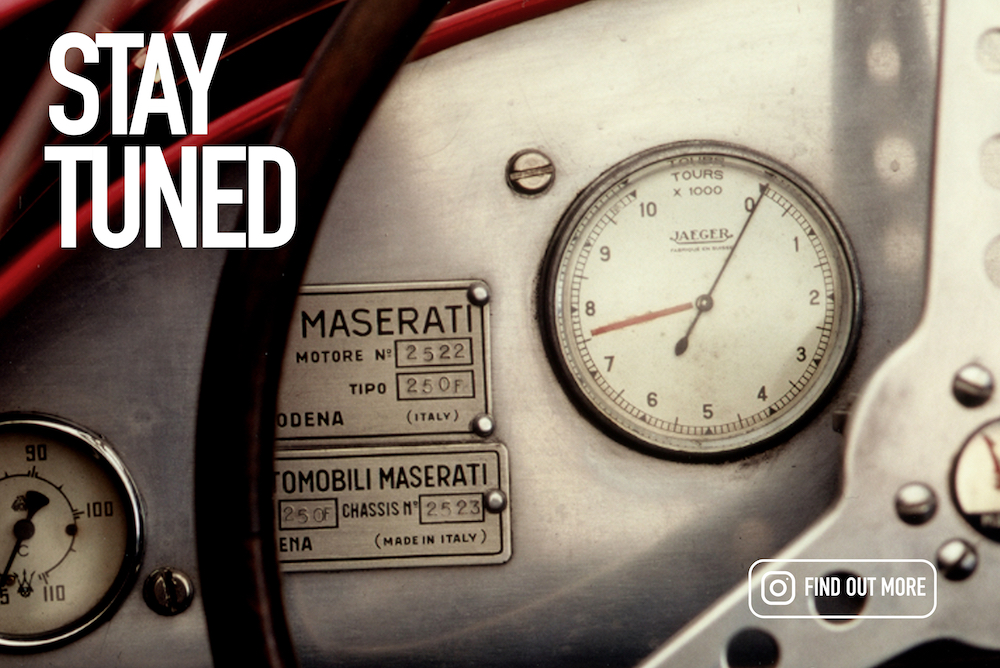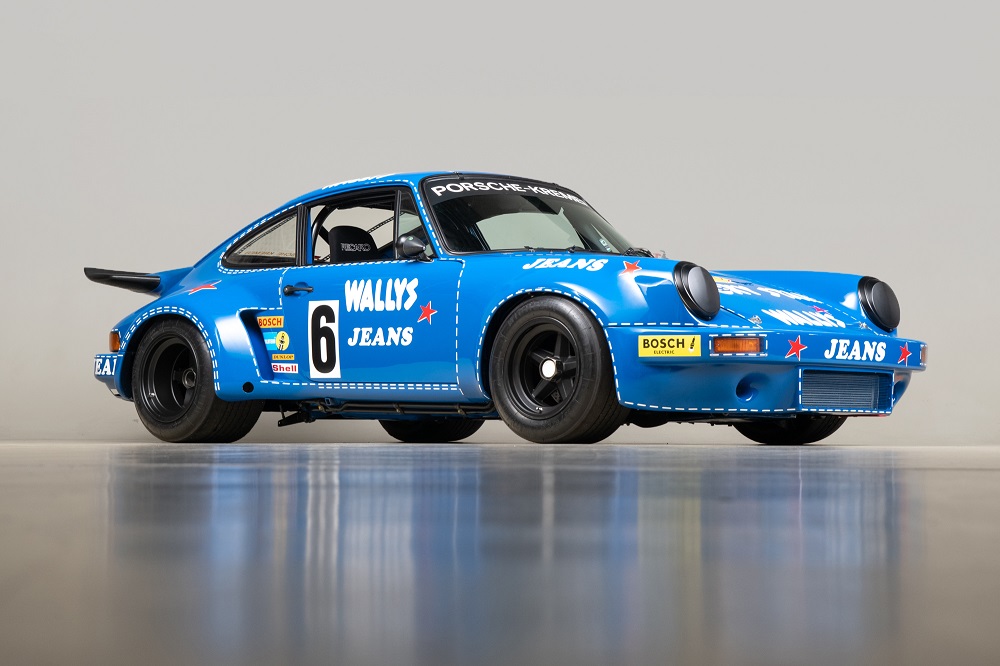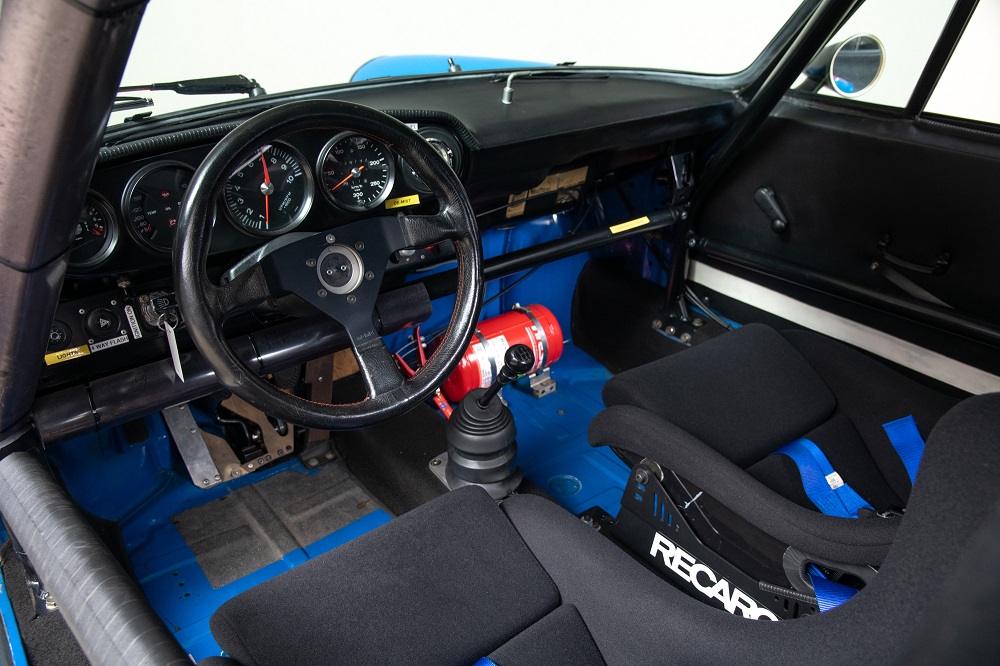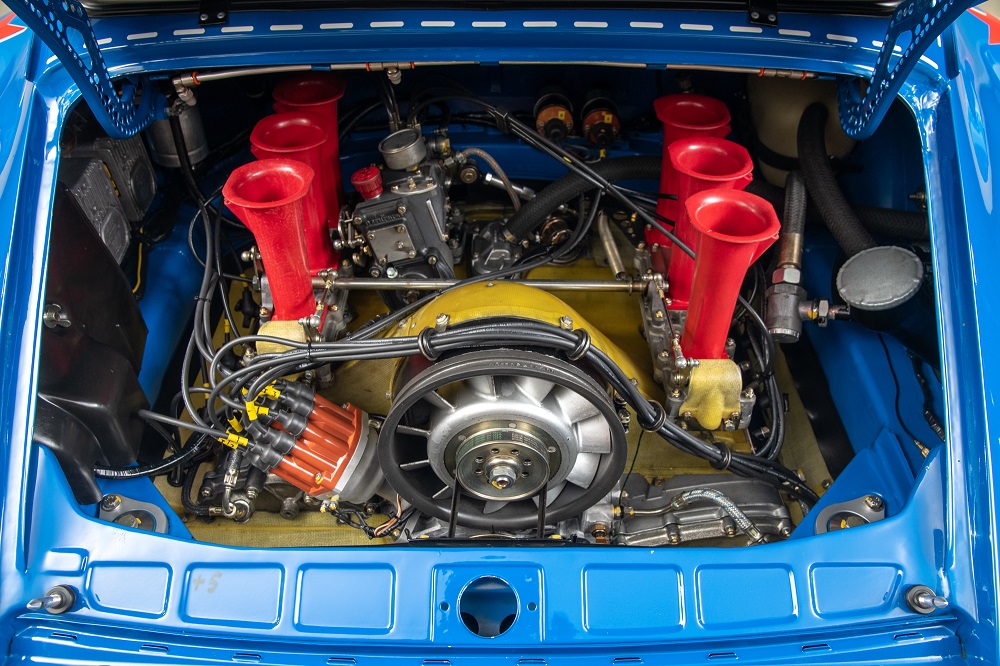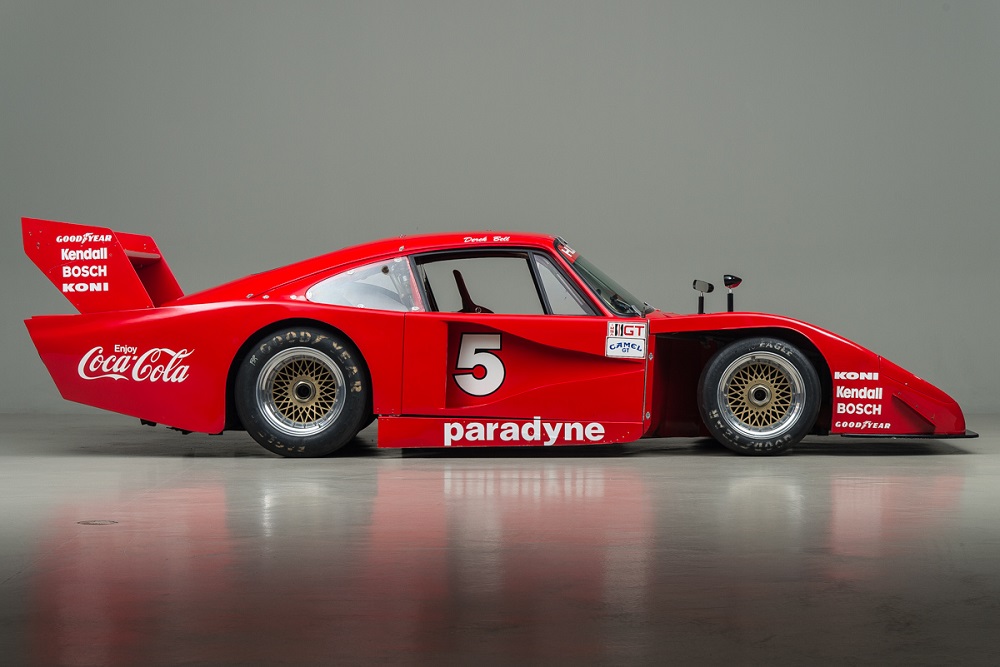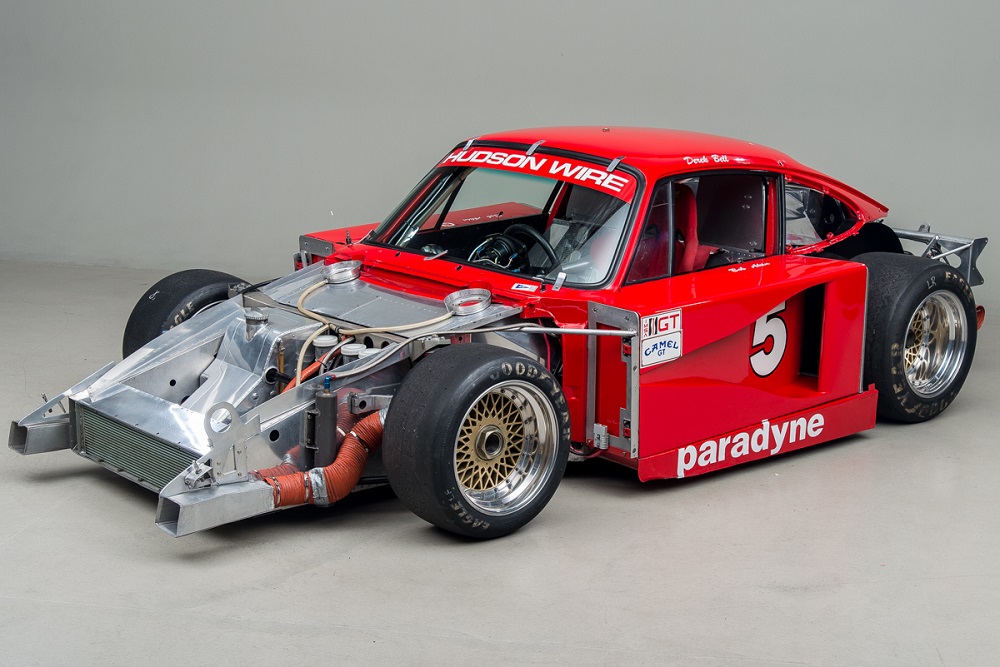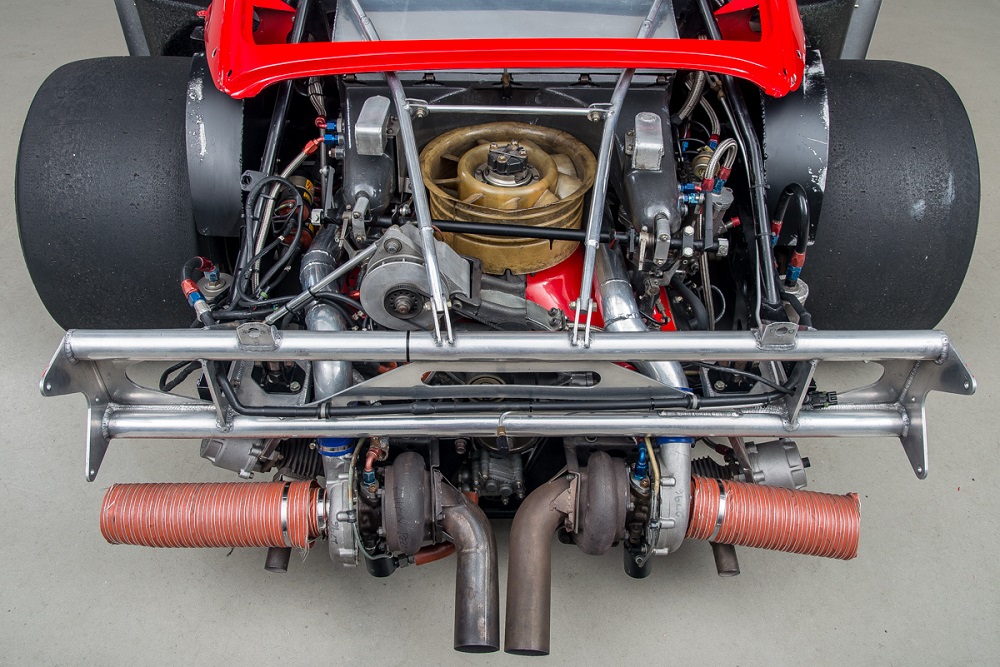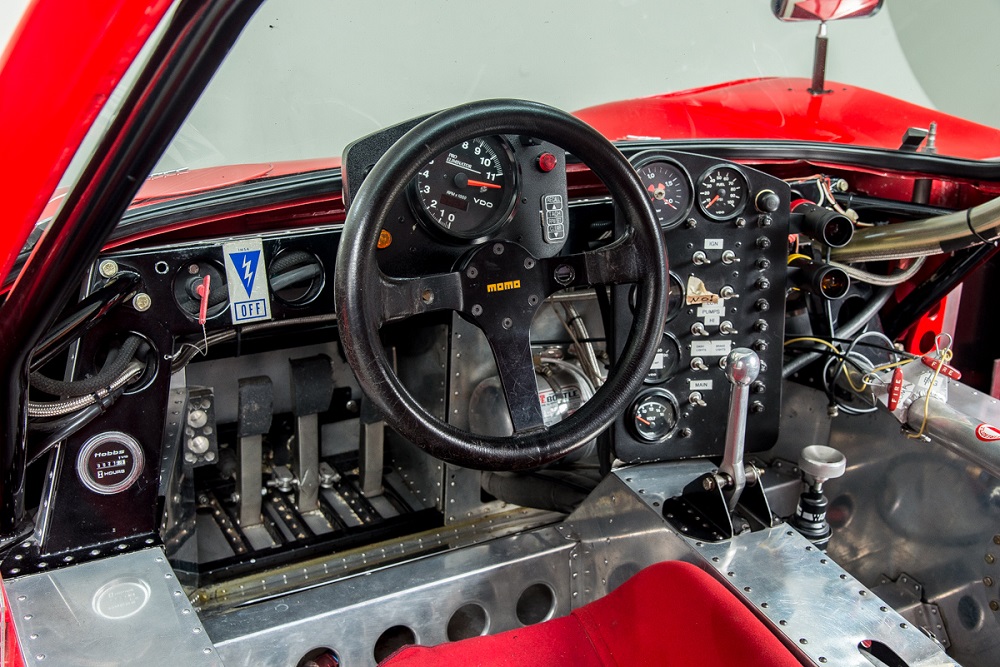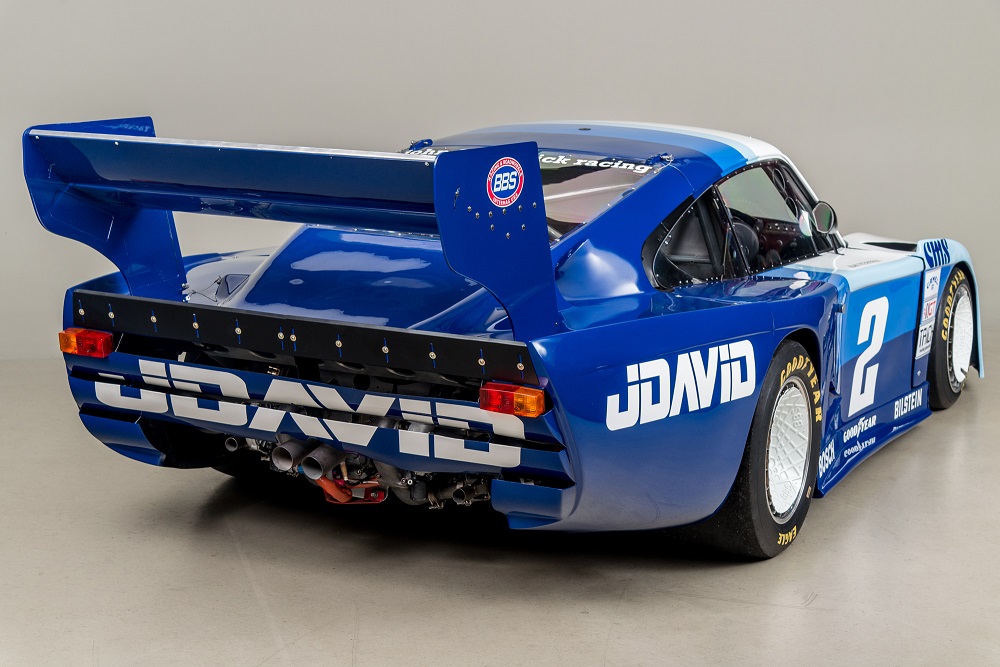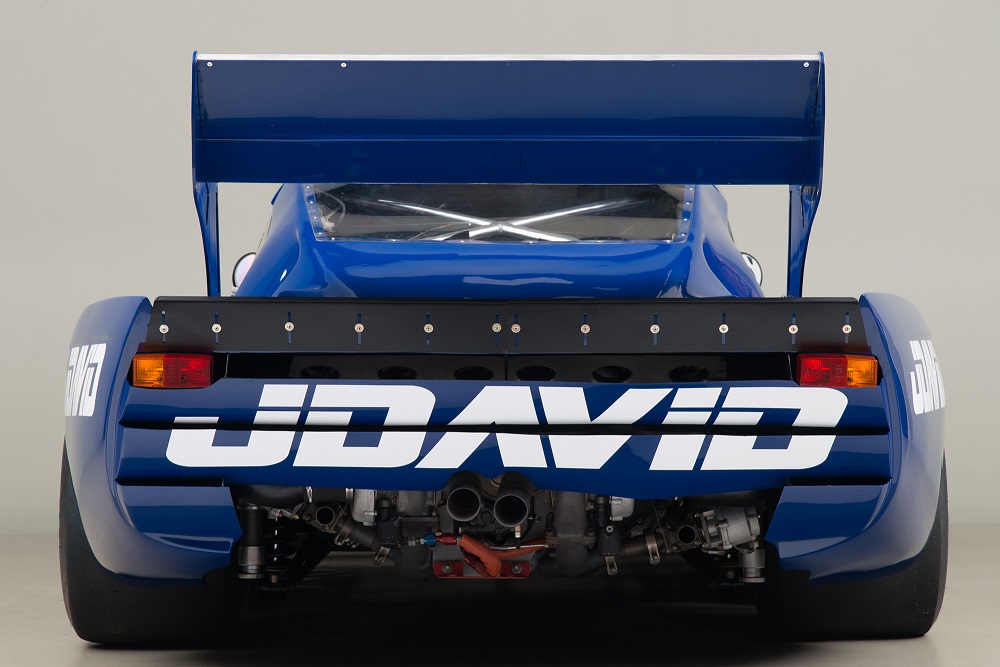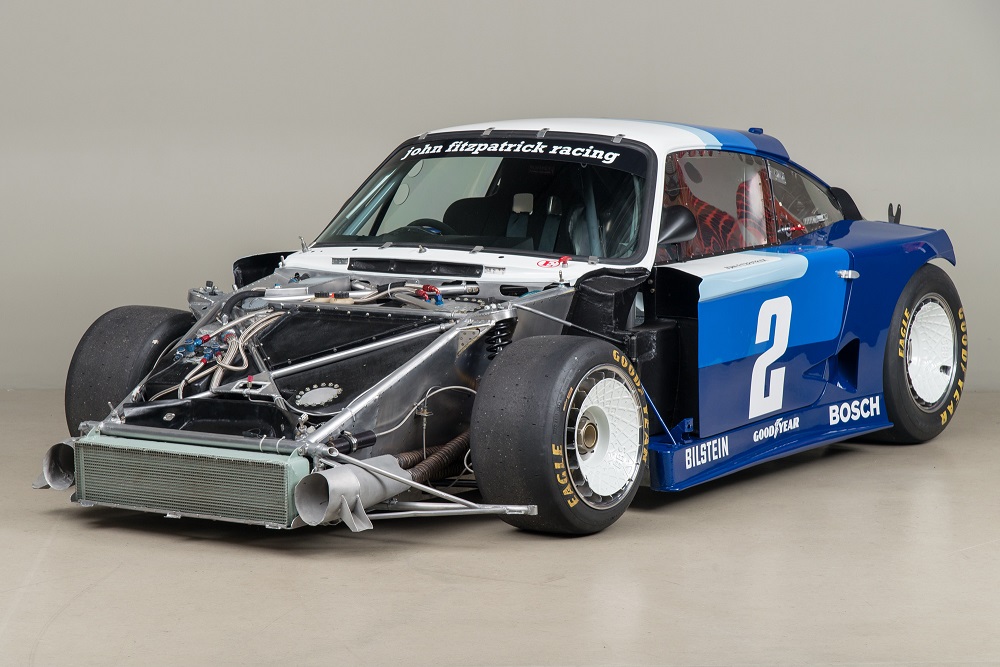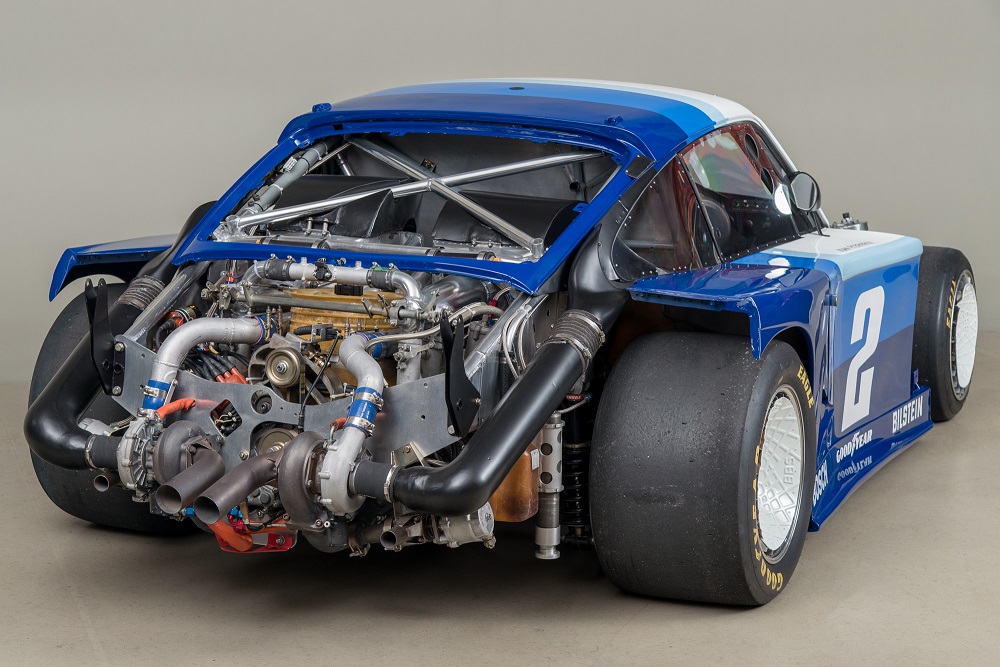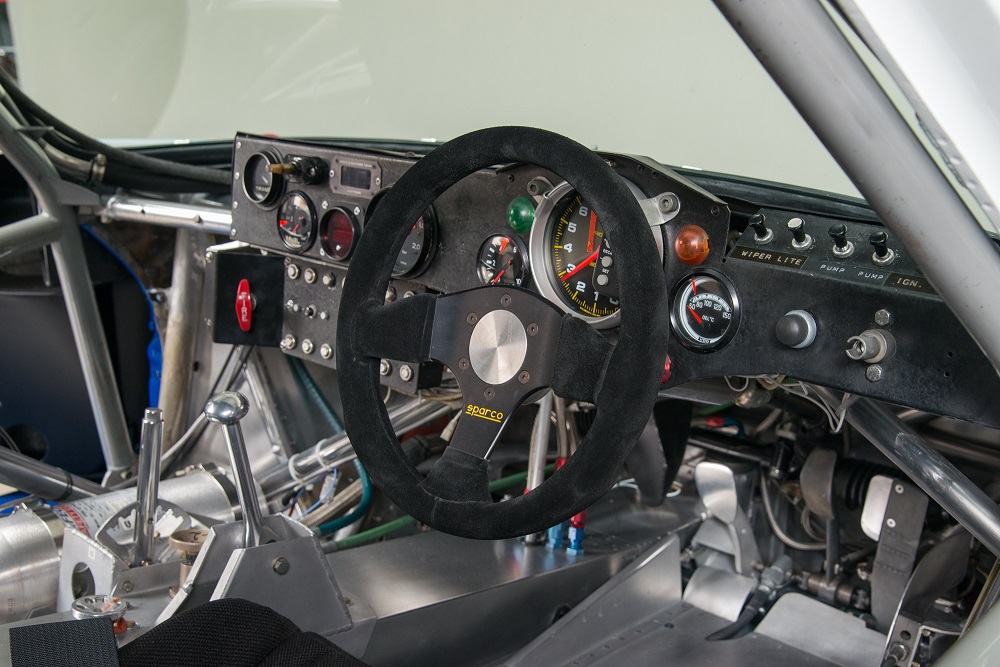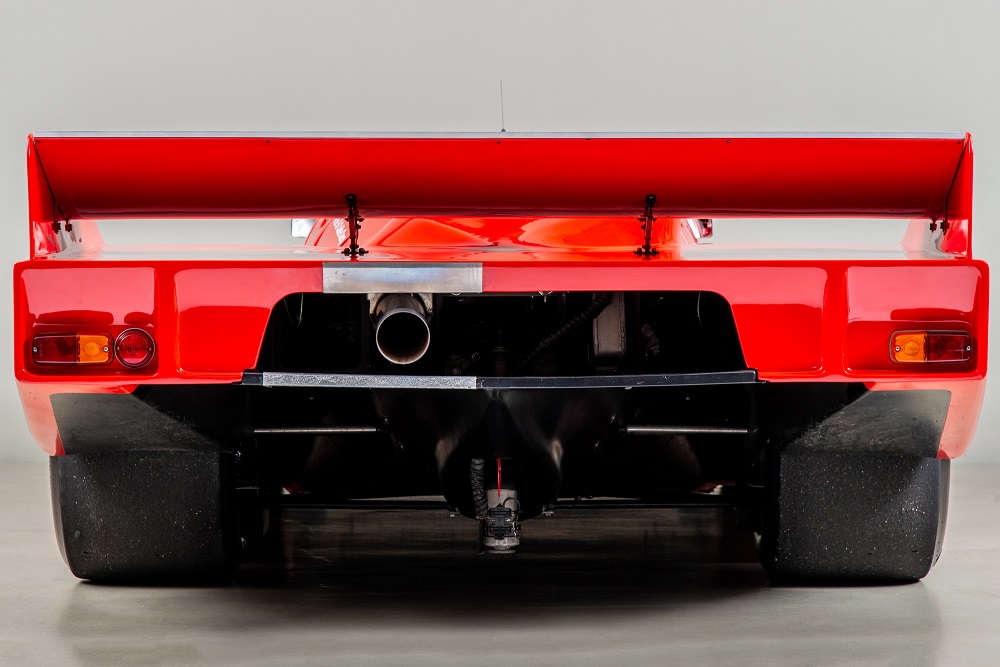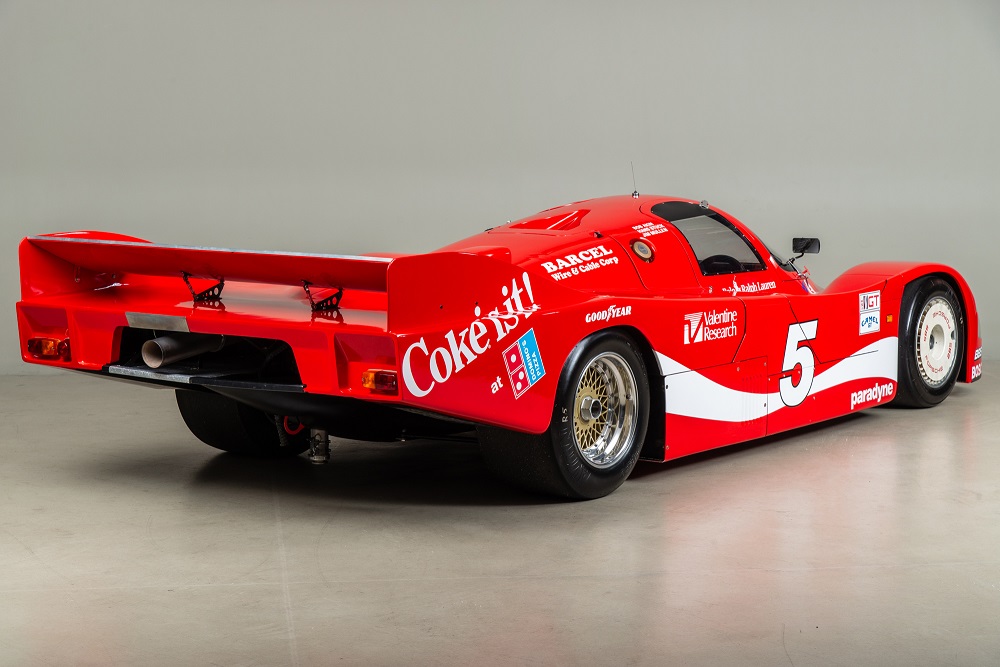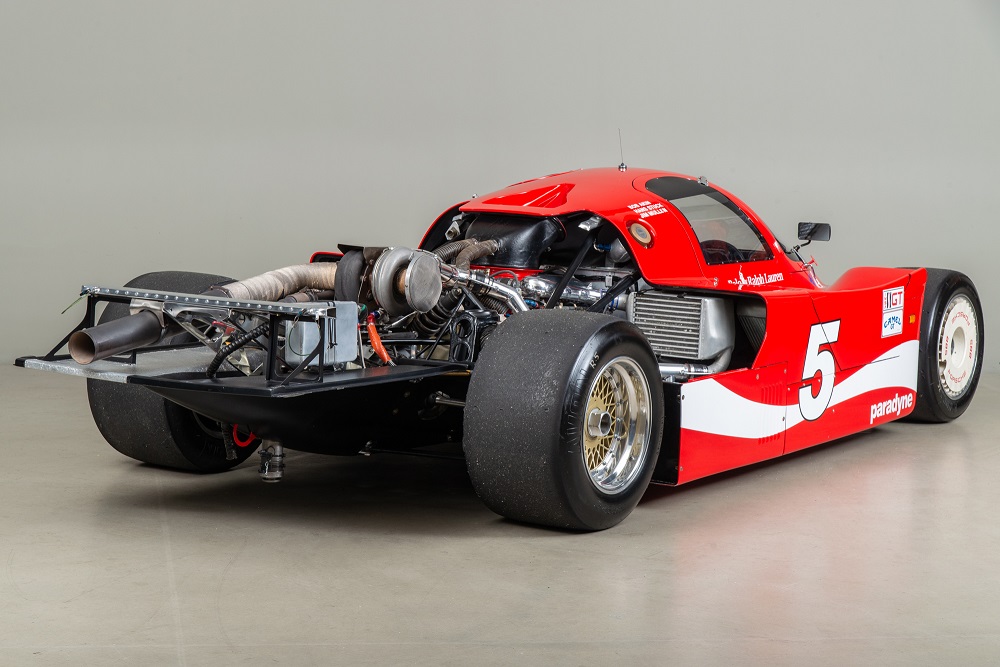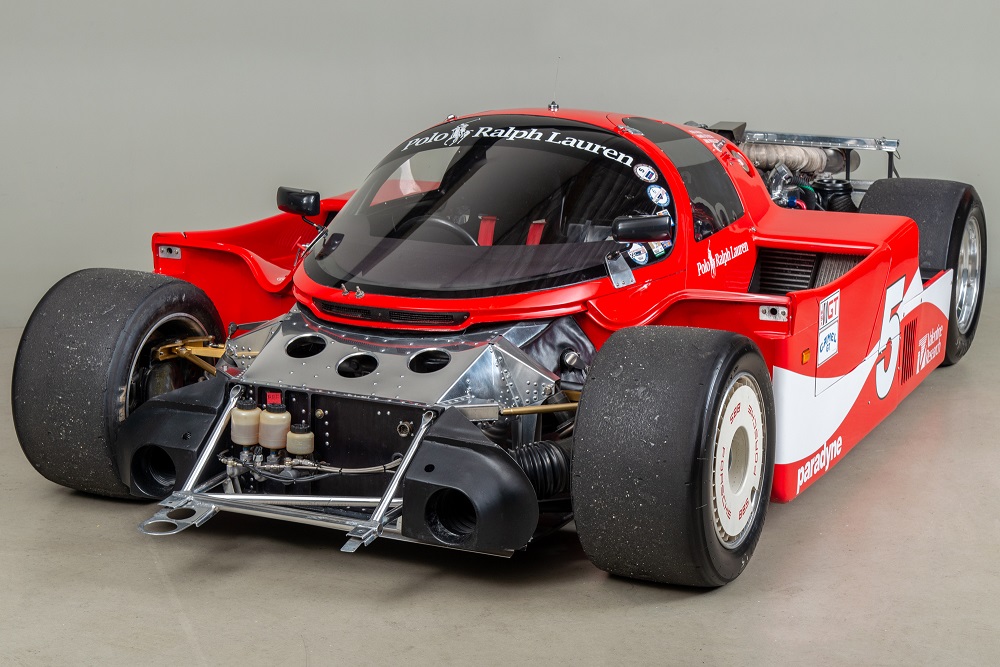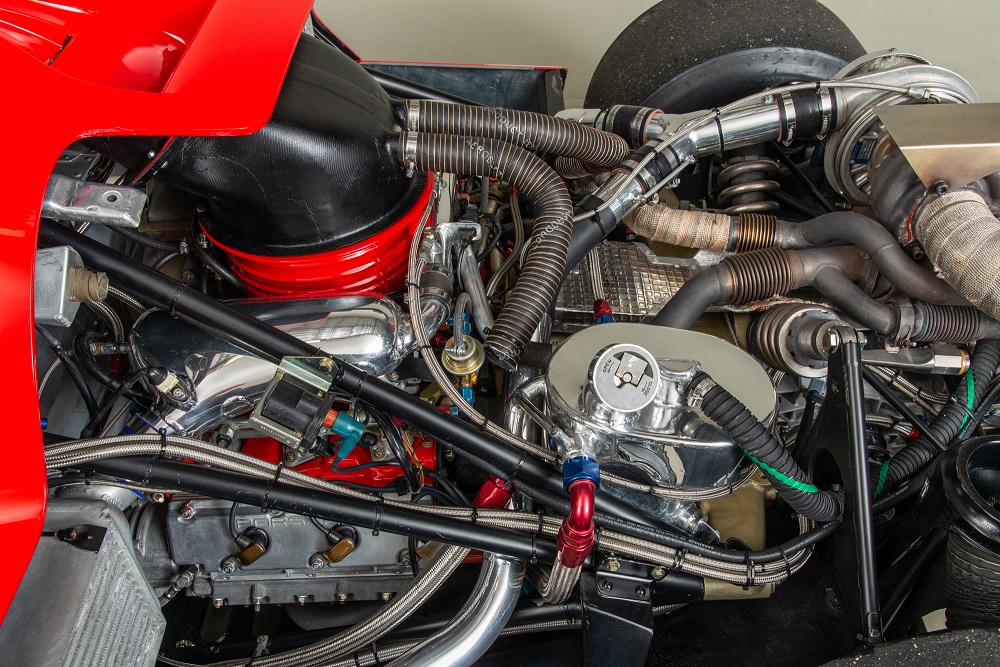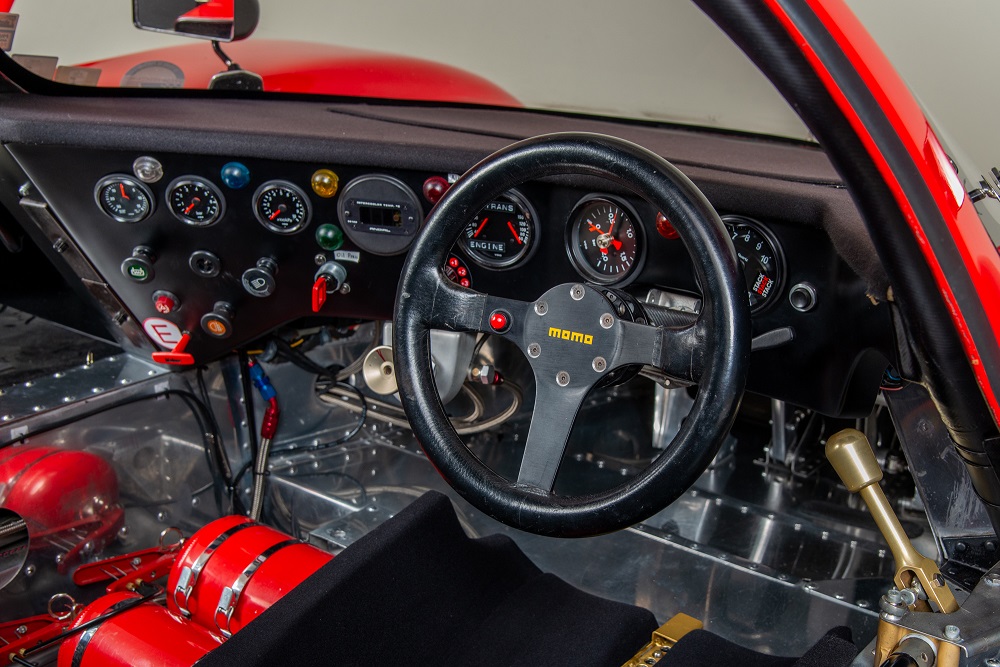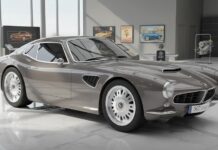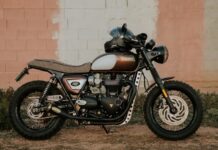Car owners trust Canepa´s motorsport team to deliver the expertise to restore and run their vehicles at the highest level.
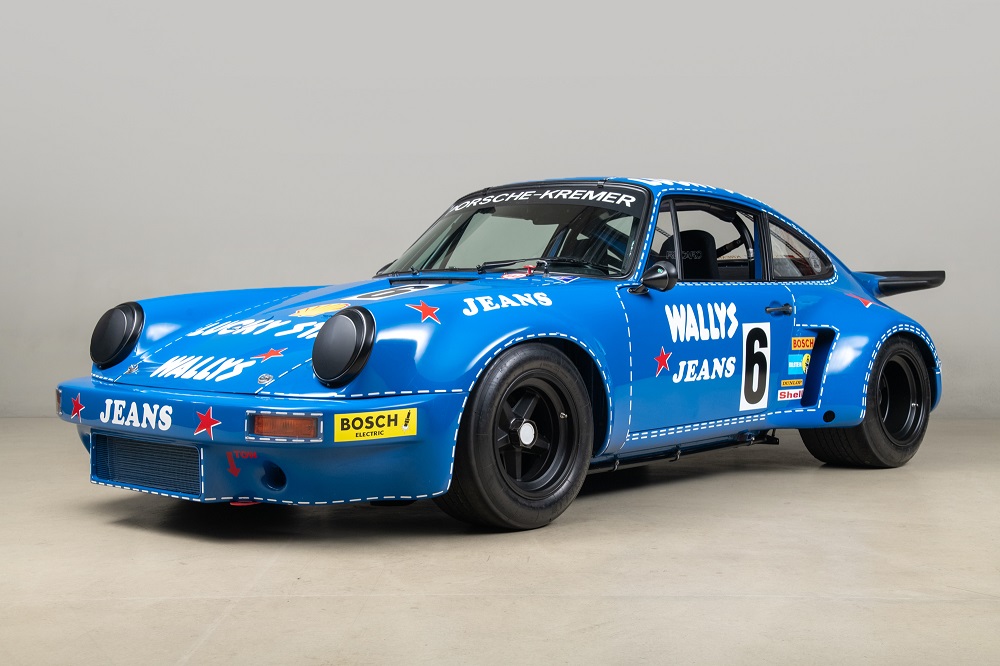
1975 Porsche Kremer RSR
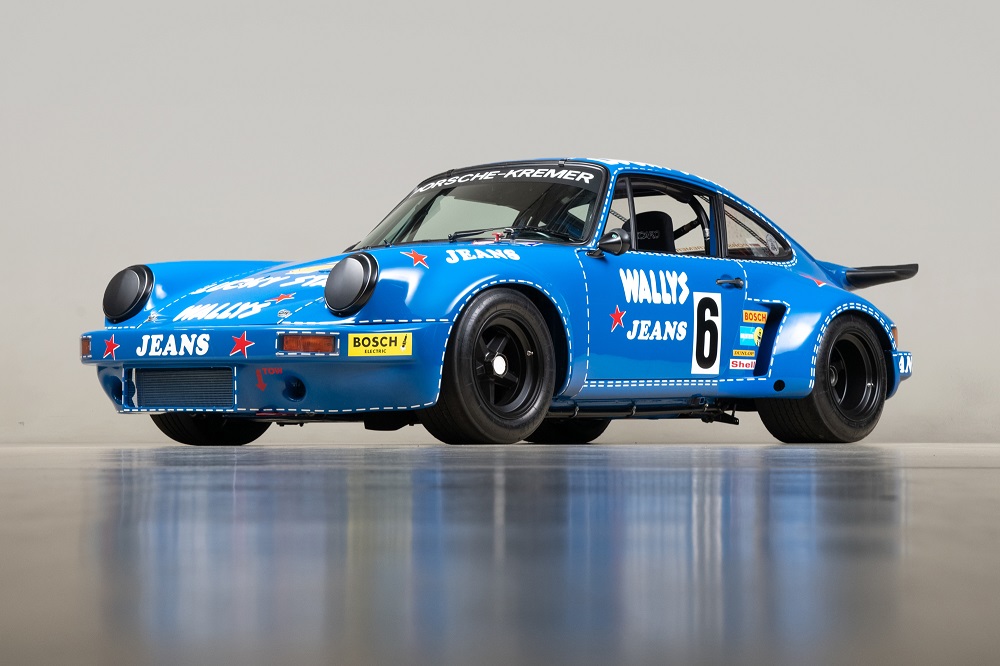
- Kremer Racing RSR
- 3.0 litre slide valve twin plug flat six
- 335 H.P.
- 5 speed transmission
- Fuchs 10”x15” front, 14”x15” rear centerlock wheels
- Fully restored
- First place at Diepholz and Hockenheim in 1975
This is the Wallys Jeans sponsored RSR built by Kremer Racing and raced primarily by Cees Sievertsen in 1975. It has extensive European racing history and many podium finishes, including a first-place finish at Diepholz and Hockenheim. After its tenure with Kremer in 1975, the car was sold to privateer Heribert Asselborn, who raced the car for the majority of the 1976 season. At the end of the season, 005 0004 was sold to racer Georg Feiberger. He finished off 1976 in the car and then sold it to fellow racer Karl-Josef Römer. The car continued to race at the amateur level in Europe for a number of years.
It turns out that after being separated from its components, 005 0004’s original chassis was built up once again, and rally/ice raced in Iceland. It was discovered in the late 1990s by some rally friends of American Porsche racer Joe Cogbill with its original parts still attached, such as the front suspension, shock brace, and steering, which is unique to the RSR. Joe offered the chassis for sale to fellow Porsche enthusiast Charles Coker Jr. of 356 Inc. in Nashville, TN, who then imported the chassis from Iceland to the United States.
Meanwhile, Michael Foveny of Munich, Germany, purchased the replacement chassis car in 2002 from Bo Strandell, a Porsche dealer in Helsinborg, Sweden, who had experience fielding team at Le Mans, along with 005 0004’s original racing logbook (ONS Wagenpass). From 2003 to 2004, Foveny set about a complete ground-up mechanical and cosmetic restoration of the car at Roitmayer in Munich, Germany.
1982 Porsche 935 Bob Akin L1
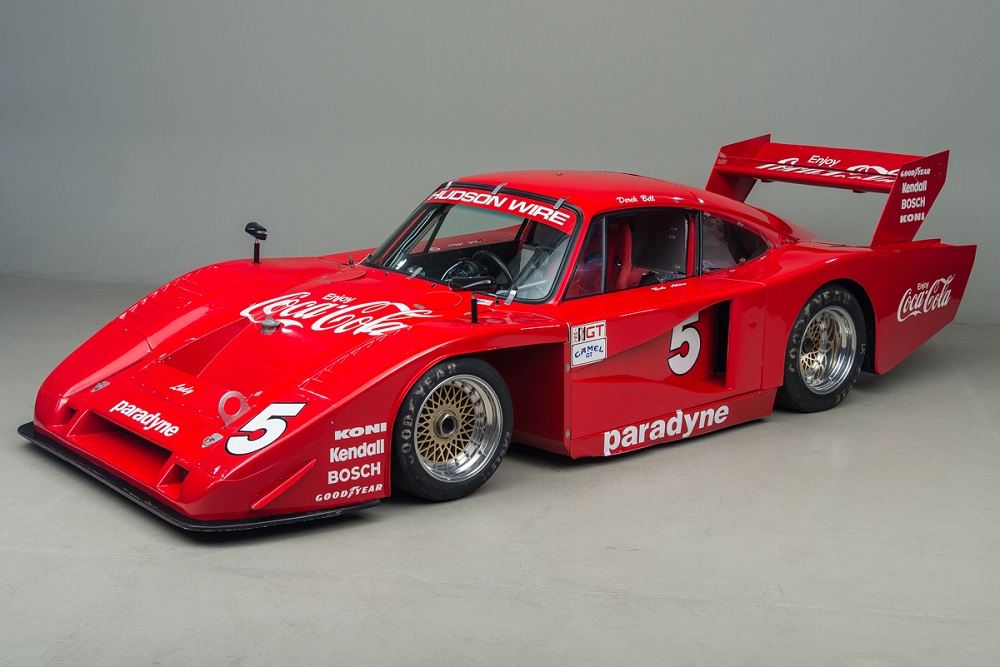
This is Bob Akin’s famous Le Mans car of 1982. It was one of the wildest Porsche 935s of the post-factory era, and also one of the fastest.
From 1977 the Porsche 935 was the car to have if you wanted to win IMSA or world championship events, but by 1982 it became very clear that a standard 935 was no longer competitive. The Porsche factory built its last 935 in 1979, so it was left to private teams to develop the cars with more aggressive aerodynamics and chassis designs.
Bob Akin knew if he wanted to win, he would have to come up with something totally radical for the 1982 season. Akin commissioned Chuck Gaa of Gaaco to design and build a “Super GTP 935”. To improve aerodynamics and increase the straight-line speed of the new car a Lola T600 GTP nose was used. A new purpose built monocoque bonded aluminum chassis was constructed combining the best of the new GTP technology with the proven power and reliability of the Porsche 935 mechanicals.
According to the rules, the windshield and roof section of a standard Porsche 930 still had to be used. To improve airflow even further the entire roof structure was tilted to put the windshield at a better angle.
Due to its complexity and unique design, the car was delivered late after the season had already begun. It made its first appearance at Lime Rock in May, which served as a test for Le Mans. At the 24 Hours of Le Mans in June the car’s design came into its own and showed tremendous straight-line speed down the famous Mulsanne Straight. Unfortunately Akin and co-drivers David Cowart and Kemper Miller only lasted two hours before a malfunction with the reserve gas tank sidelined the car.
1981 Porsche 935 K4
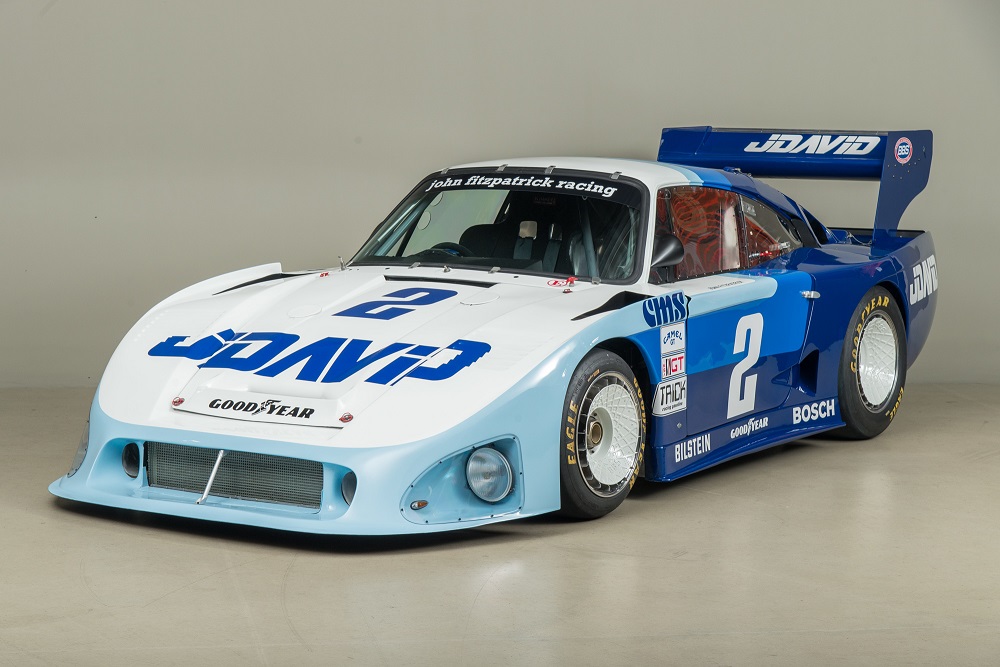
- Eight 1st place finishes, 13 total podium finishes
- Driven by John Fitzpatrick, Bob Wollek, David Hobbs, Al Holbert, Derek Bell, and Preston Henn
- One of only two K4 chassis built by Kremer Racing
- Recently restored to its 1983 IMSA specification
- 800+ horsepower 3.2-liter flat six, 4-speed manual transmission
- One of the most powerful 935s ever created
During the mid-70s the Porsche factory reigned supreme with dominate performances from their rugged turbo-powered production racecars. By 1979 the factory began to switch its efforts to the new 936, 956, and 962 prototype, non-production based racing cars. This change spelt the end for the factory Porsche 935.
However, a demand still existed for the continued development of the ferocious 935. Fortunately some years earlier Porsche had given its blessing to a number of racing teams with close ties to the factory to purchase components and drivetrains, and then designed and produced their own upgraded chassis and bodywork. While these newly constructed vehicles were still generally referred to as Porsche 935s, in reality, they were entirely new designs that advanced the 935 concept to a new level of speed and sophistication. The pinnacle of these independent efforts was the overall win at the 24 Hours of Le Mans in 1979 by the Kremer 935 K3, the last production based car ever to win overall at Le Mans.
The Kremer Brothers of Cologne, Germany had enjoyed a close relationship with the factory since 1970, and were allowed to proceed independently with further development of many models of racing Porsches. They built their first variant of the 935, the K1, in 1976. By 1981, Kremer was ready to produce its fourth version of the Porsche 935, the K4, inspired by the factory Moby Dick 935 produced by Porsche in 1978. In fact, the factory gave the Kremer’s the drawings, parts, and the Moby Dick car itself on commission to build the new K4.
01 is the first of only two K4s produced, and as a result of Kremer’s constant development, bore little resemblance to an early factory 935. The K4 had evolved into a totally different vehicle, built on a full tubular chassis, with only a roof and windshield being supplied by the Porsche factory. 01 was fielded by Kremer Racing in Europe during the 1981 season, and was driven by Bob Wollek to TWO WINS and a total of six podium finishes.
1984 Porsche 962
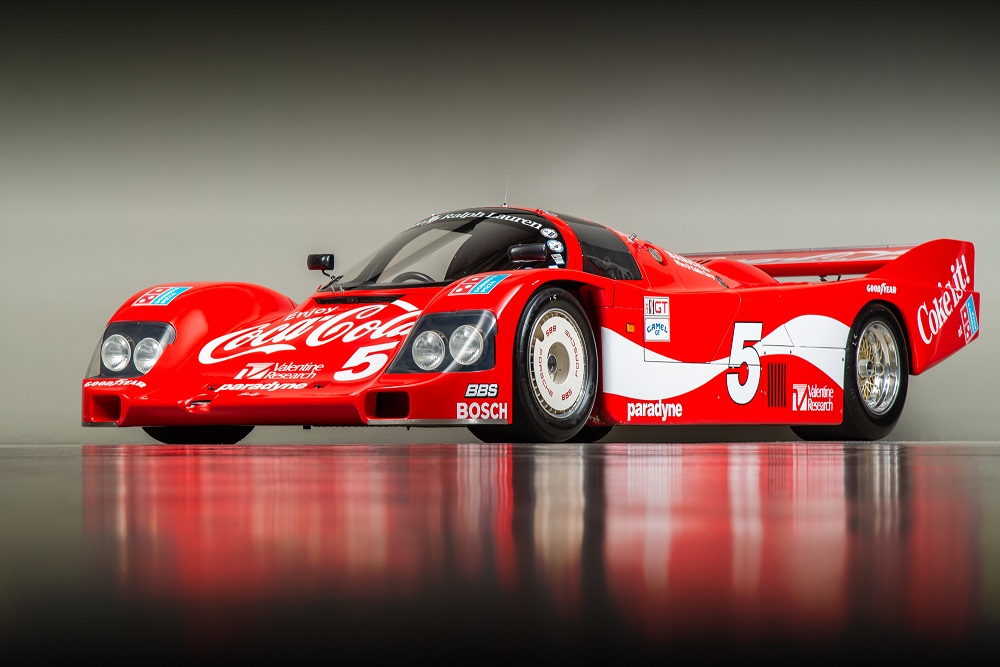
- The second privateer Porsche 962 delivered
- Raced by IMSA Camel GT-Champion Bob Akin and 2-time LeMans winner Hans Stuck
- Pole position and track record at the 1985 12 Hours of Sebring
- Finished 4th overall at the 1985 24 Hours of Daytona
- One of approximately 16 Porsche factory-built IMSA-spec 962s delivered to privateers
- Extensive 4-year restoration
- Actively campaigned in historic events across America
- Featured cover car in Panorama for September 2017
- One of the most recognizable liveries to be displayed on a 962
1984 would be the year that Porsche produced the car that would lay a foundation for their dominance in endurance racing in IMSA: The Porsche 962. Beginning with the already outstanding Porsche 956, IMSA regulations required that the driver’s feet be behind the front axle for safety reasons. By extending the wheelbase and moving the pedal box behind the front wheels, the 962 was approved for racing. These IMSA-spec 962s began with Porsche’s Type 962/70 2.8-liter flat six engines with air-cooling only and a single turbo as twin-turbo systems were not allowed in the IMSA GTP class at the time. With the previous racing experience of the Porsche 956s, along with numerous other improvements, helped push the 962s to become legendary. With Porsche’s tried-and-true formula of world-class reliability paired with continued advancement, some 962s remained competitive even until the early 90s. Considered one of the most iconic racing platforms in endurance racing, the Porsche 962 left its mark on the racing world and is still one of the most renowned racing cars to ever come out of Weissach.
The story of 962-102 begins with Bob Akin, the freshly crowned champion of the 1983 IMSA Camel GT Endurance series. Being the president to the family-owned Hudson Wire Co., allowed Akin to run a first class and competitive race team. Akin and his team won the Twelve Hours of Sebring in 1983 with their Coca Cola-sponsored Porsche 935, and was looking toward the next step in IMSA racing.
As fate would have it, Porsche AG announced that the 962, based on the extremely competitive 956, would be available in the fall of 1983. Intent on acquiring one of these cars but realizing that the cost of his racing had increased dramatically over the past few years, he looked to work his racing success in looking for new sponsors. Enter Mike Valentine, having recently cashed out of his co-ownership in Cincinnati Microwave, and was interested in acquiring a 962. During a dinner together, the duo worked out a plan. They agreed that Valentine could purchase the 962 and then lease it to Akin, and once the car was retired, Valentine would own the car. With a plan now benefiting both parties, Valentine Racing, Inc. was established days later with Valentine Research proudly displayed on the side of the bright red Coca Cola Porsche 962.
If you are interested in more news click here.
